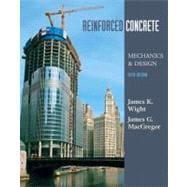
| This is a downloadable WebCT Course Cartridge | |
| The cartridge will include chapter objectives, chapter quizzes, chapter summaries, weblinks, PowerPoints, and an additional test bank | |
| Popular student resources such as the Prentice Hall Planner, Student Reflection Journal, 10 Ways to Fight Hate, and Student Success Supersite will be housed here | |
| Students will be engaged by the video clips and career development workshops which reinforce the course content | |
| In addition, access to Research Navigator is provided, which is a powerful on-line program for helping students with the research process and all that it entails | |
| Please visit www.researchnavigator.com for additional information | |
| Table of Contents provided by Publisher. All Rights Reserved. |
The New copy of this book will include any supplemental materials advertised. Please check the title of the book to determine if it should include any access cards, study guides, lab manuals, CDs, etc.
The Used, Rental and eBook copies of this book are not guaranteed to include any supplemental materials. Typically, only the book itself is included. This is true even if the title states it includes any access cards, study guides, lab manuals, CDs, etc.